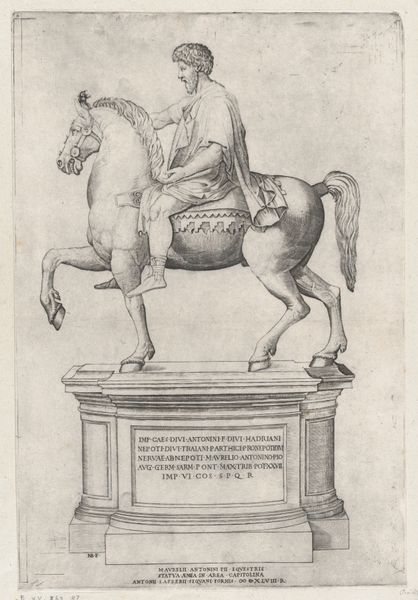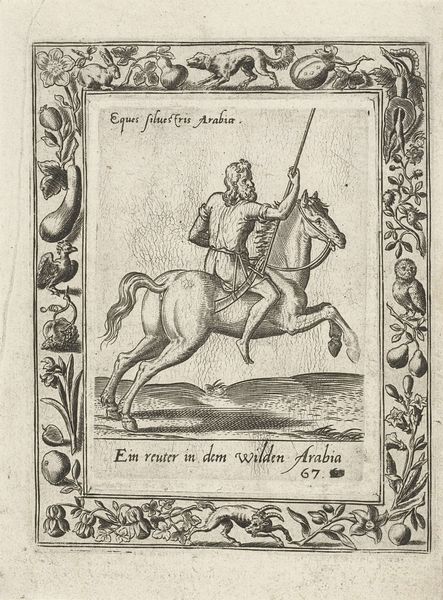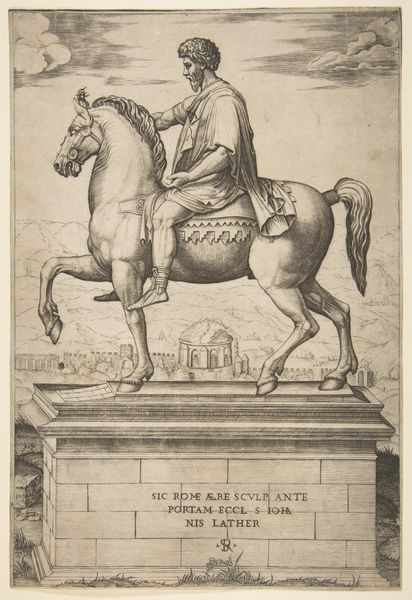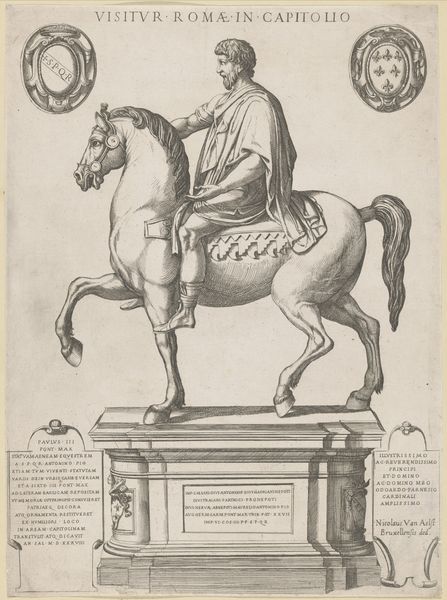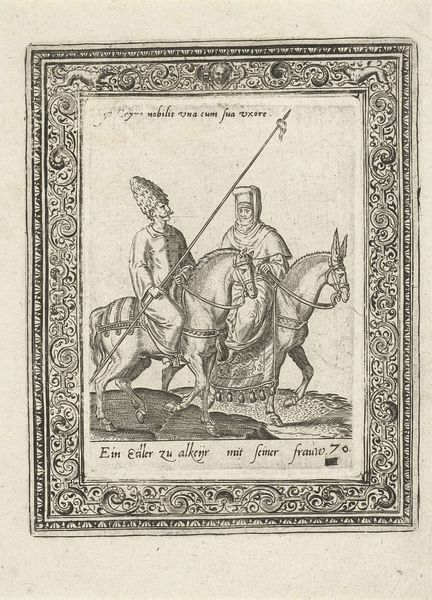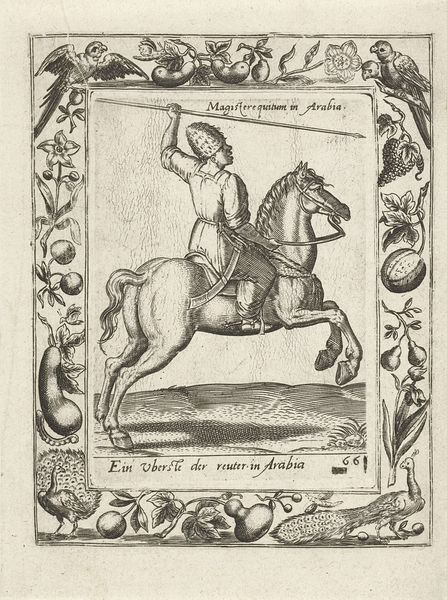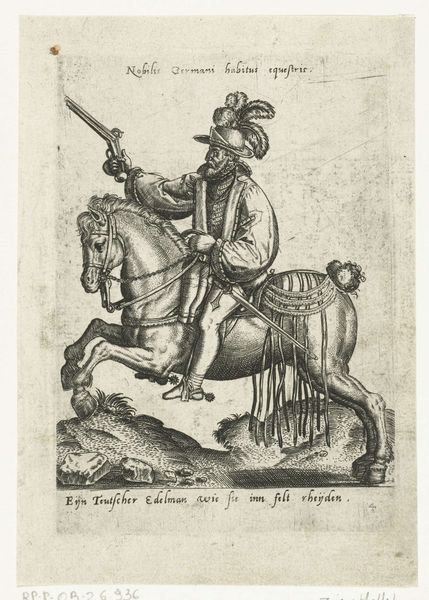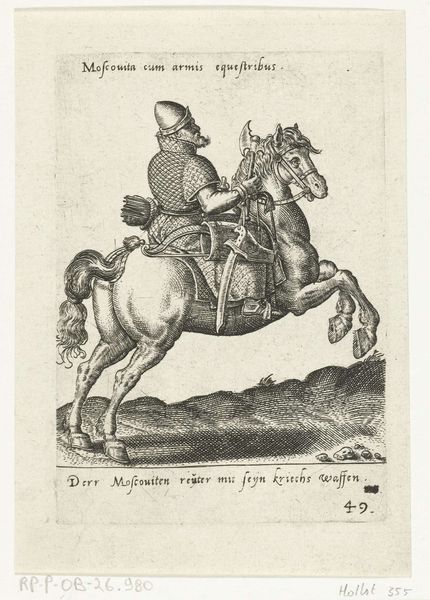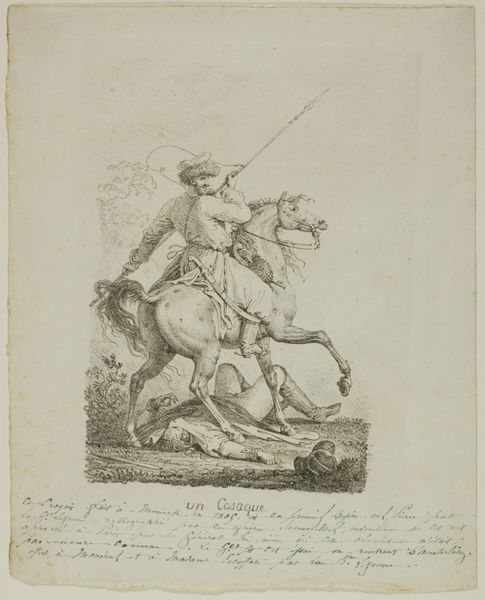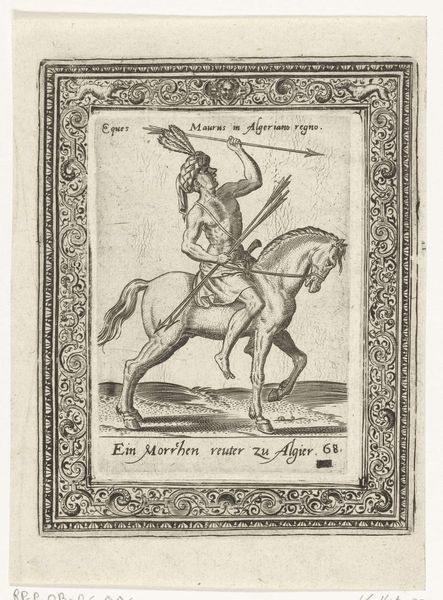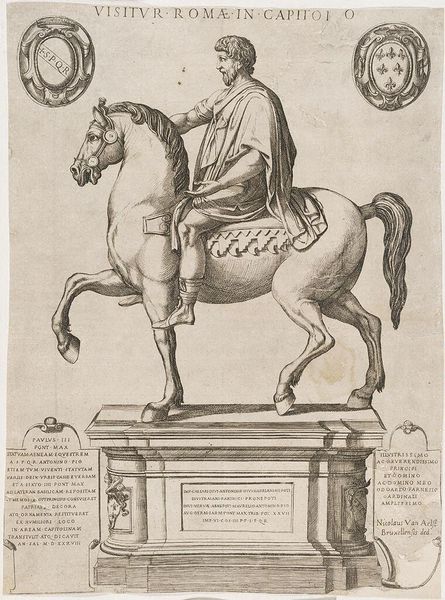
print, etching, engraving
#
portrait
#
neoclacissism
#
narrative-art
# print
#
etching
#
caricature
#
pen-ink sketch
#
cityscape
#
history-painting
#
academic-art
#
engraving
Dimensions: height 306 mm, width 211 mm
Copyright: Rijks Museum: Open Domain
Editor: This etching from 1787-1790, "Nar met vaandel op een ezel," is unsigned but attributed to someone called "Anonymous". The print depicts a figure riding what appears to be a donkey. It’s... well, a bit silly looking. What’s going on here? Curator: The artist, indeed anonymous, is making a potent political statement through caricature. Note how the rider, holding a flag, seems almost comically out of place on the donkey. What might the donkey represent in this context? Editor: Stupidity, maybe? Or stubbornness? Curator: Precisely! And look at the flag he's holding – do you see the inscription? It translates to "For the welfare of citizens is the highest law". This work emerged during a time of great political tension in the Netherlands, with Patriots challenging the authority of the Stadtholder, and criticising perceived ineffectual governance. Editor: So the donkey and the clumsy rider… they're symbols for those in power at the time? Curator: Exactly. The artist critiques their leadership, portraying them as foolish and incompetent. The choice of a print – an easily reproducible medium – would have allowed for wide distribution of this political commentary. The choice of visual satire made the political position digestible. Consider the social impact: Who would feel seen by this artwork? And who might feel attacked? Editor: It's amazing how much you can read from just a simple image! I didn't expect such a sharp commentary. Curator: These visual critiques were a powerful tool. Remember that art is often deeply entangled with the political and social realities of its time. Editor: Definitely given me something to think about - it challenges what I think 'political art' really is!
Comments
No comments
Be the first to comment and join the conversation on the ultimate creative platform.
